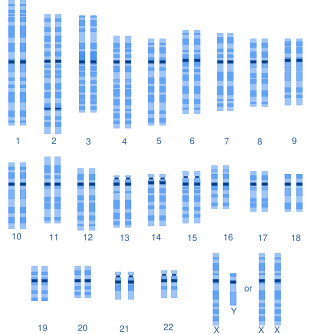
Back تنوع جيني Arabic Genetička raznolikost BS Diversitat genètica Catalan Genetisk diversitet Danish Genetika diverseco Esperanto Diversidad genética Spanish Geneetiline mitmekesisus Estonian Dibertsitate genetiko Basque تنوع ژنتیکی Persian Perinnöllinen muuntelu Finnish

Genetic diversity is the total number of genetic characteristics in the genetic makeup of a species. It ranges widely, from the number of species to differences within species, and can be correlated to the span of survival for a species.[1] It is distinguished from genetic variability, which describes the tendency of genetic characteristics to vary.
Genetic diversity serves as a way for populations to adapt to changing environments. With more variation, it is more likely that some individuals in a population will possess variations of alleles that are suited for the environment. Those individuals are more likely to survive to produce offspring bearing that allele. The population will continue for more generations because of the success of these individuals.[2]
The academic field of population genetics includes several hypotheses and theories regarding genetic diversity. The neutral theory of evolution proposes that diversity is the result of the accumulation of neutral substitutions. Diversifying selection is the hypothesis that two subpopulations of a species live in different environments that select for different alleles at a particular locus. This may occur, for instance, if a species has a large range relative to the mobility of individuals within it. Frequency-dependent selection is the hypothesis that as alleles become more common, they become more vulnerable. This occurs in host–pathogen interactions, where a high frequency of a defensive allele among the host means that it is more likely that a pathogen will spread if it is able to overcome that allele.
| Part of a series on |
| Evolutionary biology |
|---|
 |
- ^ biological online dictionary, genetic diversity (7 October 2019). "genetic diversity definition and examples".
- ^ "National Biological Information Infrastructure". Introduction to Genetic Diversity. U.S. Geological Survey. Archived from the original on February 25, 2011. Retrieved March 1, 2011.